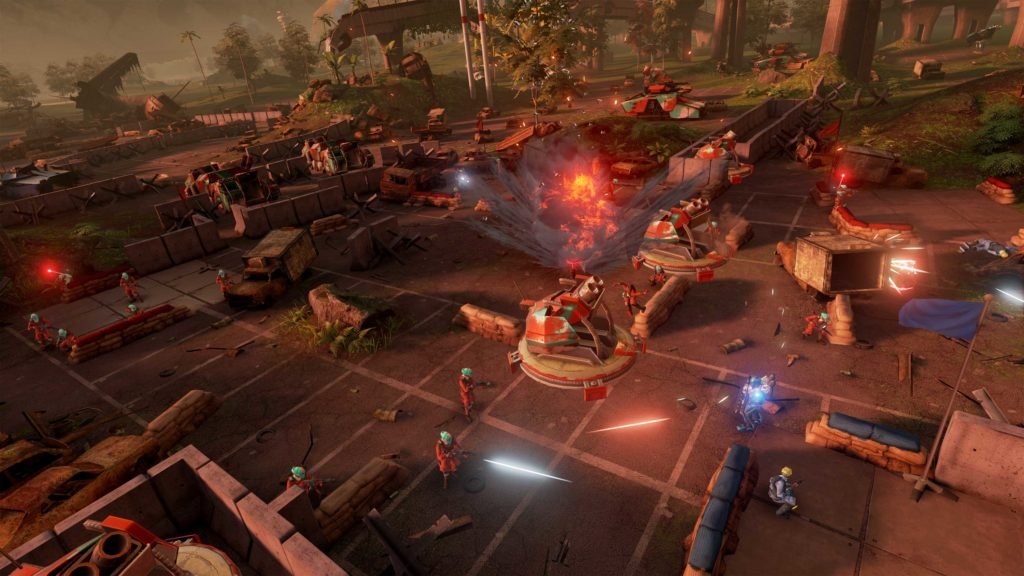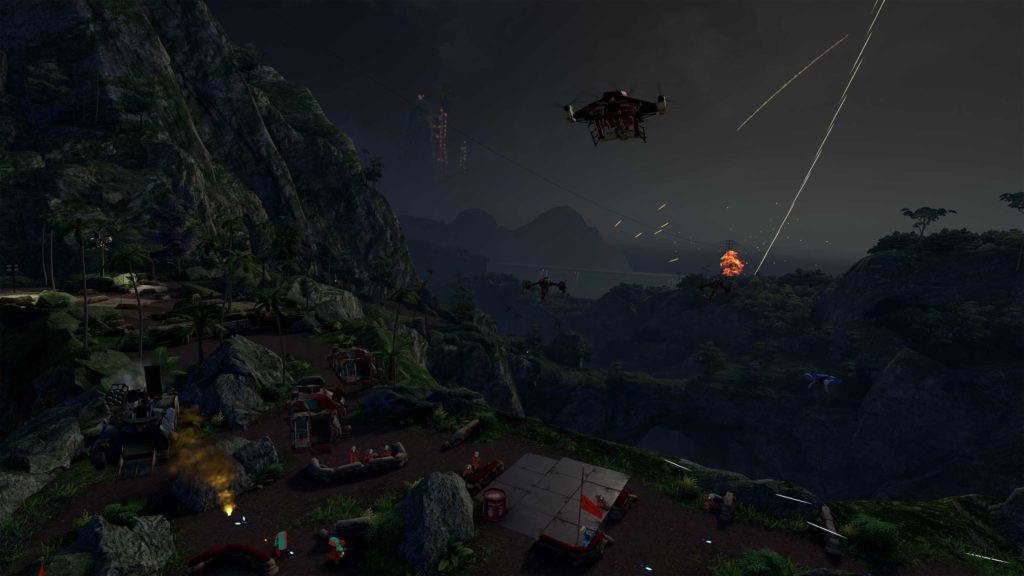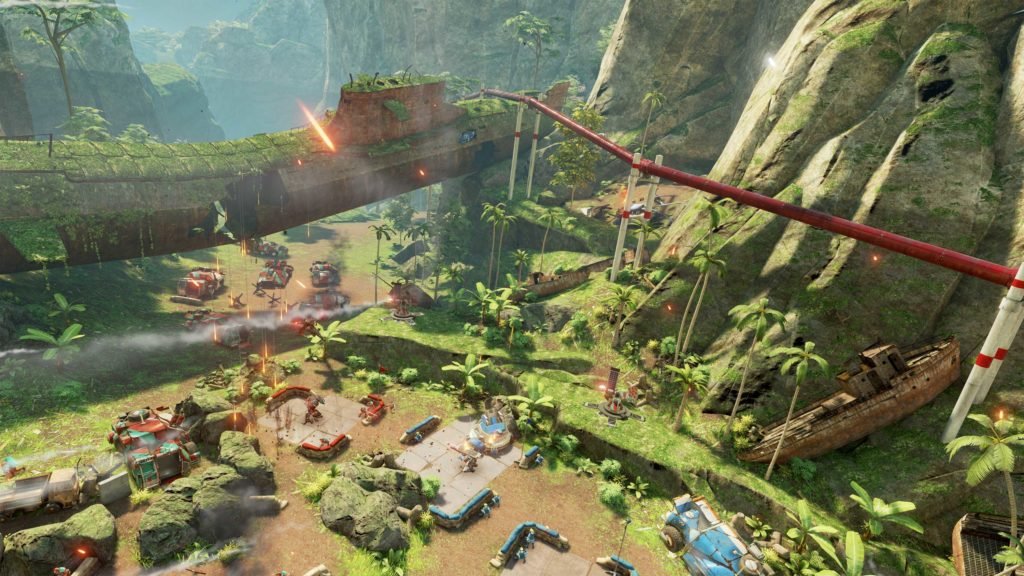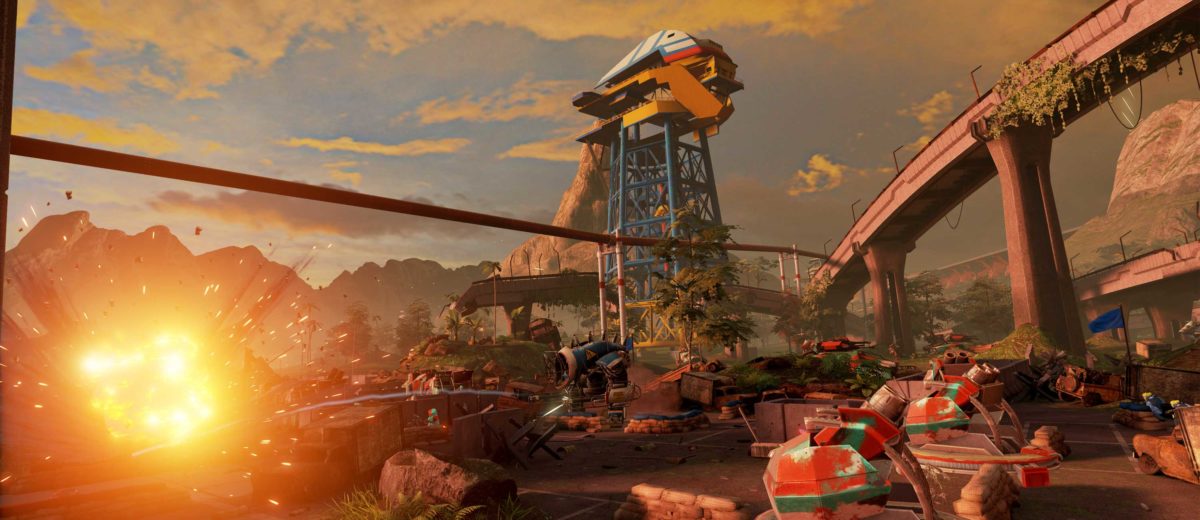Shooting, driving, and flying games are obvious perfect fits for virtual reality. They are a natural extension of the hardware and don’t take much creative adaptation to get the game feeling right. But there is also another perfect fit that many people may not have considered yet: real-time strategy games. Developer Force Field realized this potential, their upcoming Oculus exclusive Landfall being a top-down RTS game. The title’s recent open beta showed off everything that VR has to offer the strategy genre.
In Landfall, your goals are that of most RTS games. You’ll spend a lot of time capturing, holding, or destroying objectives, as well as simply wiping out the enemy team. What you won’t spend much time on, however, is resource or unit management. That’s because you don’t actually have any resources to worry about in the first place, and you only control a single unit. You’re still surrounded by an army of AI companions, but you never take direct control over any of them. You need to think about combat the same you would in any other RTS game, meaning can’t just run in and take on a group of enemies by yourself. Instead you need to consider how many friendly troops are with you, which units they are attacking, and how you are all positioned in order to come out on top. You are a smaller part of a larger force, and tactics will win over brute force.

Since you’re not building up or commanding an army, you instead build up your own character throughout the course of a match. You start off with only a simple machine gun, but as you kill enemies and accomplish objective you gain experience which allows you to unlock more loadouts in either the Light, Medium, or Heavy class. While Landfall is definitely not a MOBA, these mechanics make it feel more like one than it does a traditional RTS at first, since you are focused on the development and manipulation of a single character rather than an entire army.
After you play a full match, however, you realize that the rest of the game is built like an RTS. You’re not pushing lanes, taking out enemy towers, or last hitting creeps, instead you’re focused on tactically positioning yourself and a large army so that you can take out the enemy before they do the same to you.
Each loadout also comes with its own mech that can be called into battle after a timer fills up. The different mechs have different loadouts and abilities of their own and they do a lot to mix up the feel of the gameplay in the middle of a battle. They can be used to implement different strategies as well, with some mechs being better at taking out troops, and others being better at dealing with enemy mechs.

The final release will include a full single-player campaign, but the beta was focussed on the multiplayer component, which allows 1 vs 1 and 2 vs 2 battles. There is, of course, the standard deathmatch mode, but also a more interesting objective mode. In the objective mode, an attacking team is pitted against a defending team, but the big difference is that the attackers have a finite amount of lives while the defenders do not. This makes each side use very different strategies, as defenders don’t have to worry about dying nearly as much as the attackers do. And the attackers will have to fight to keep their NPCs alive as well, since player deaths count as 10 kills and NPC deaths count as 1 kill.
While none of these mechanics necessarily scream VR, what makes it work so well as a VR game is the top-down perspective. It’s the same as playing a traditional RTS game, except your head is the camera. Just like with shooting, driving, and flying games, it just feels natural. Need to see what your army is up to off-screen? Just look over there. Need to get a closer view of the battle to really see what’s going on? Just move your head closer. It all just feels right and makes sense the second you start playing.

One thing that is a little disappointing, though, is that despite being both a VR game and an RTS game, Landfall is played with a standard Xbox controller. The control scheme does work fine for the way the game plays, and perhaps it even makes sense to use a normal controller in a top-down game where you only control a single character, but whenever I play either a VR game or an RTS game without being able to very quickly point at something, I end up feeling a little hamstrung. Again, the control scheme isn’t particularly bad or unfriendly, but it’s hard not to think the game could benefit from Oculus Touch support if the developers decide to add it in the future.
Even though Landfall seems a little simplified in order to work with a controller, the chaotic multiplayer was a lot a fun, and I can definitely see myself playing more. The only concern is whether or not other Oculus owners will feel the same way, since multiplayer games live and die by their player-base, and the Oculus doesn’t have many players to begin with.


